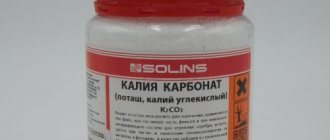- MagniuM
- Articles
- Magnesium deficiency
|
|
Date of publication: 05/27/2019
Modern life sets us such a pace that we are accustomed to attributing most ailments to chronic fatigue, stress and poor nutrition. In fact, the body gives us signals about a lack of vitamins, minerals and microelements, which are so necessary for normal functioning. One of these elements is magnesium. A huge number of biological processes in the human body cannot occur without it. A lack of magnesium has a complex effect on health, affecting all organs and systems of the body.
The role of magnesium for the human body
Among the elements contained in the human body, Mg is in fourth place in abundance. It makes up 0.2% of the total human body weight. The largest amount of the substance is found in the bones, about 60%. Approximately 20% of the mineral is found in muscle tissue, and the same amount is distributed throughout soft tissue. The higher the metabolism of a particular organ, the more of this substance it requires.
A healthy adult needs to consume 350 mg Mg per day. Depending on age and circumstances, the amount may vary. In stressful situations, adolescents during periods of intensive growth, women during pregnancy and lactation require 100-150 mg more of the element. The mineral is also necessary for diseases caused by infections during post-operative recovery of the body. In addition, during intense physical activity and visiting a bathhouse, Mg is washed out of the body along with sweat.
So, what properties does magnesium have?
- Regulates blood pressure.
- Strengthens bones and muscles.
- Promotes the growth and development of children.
- Participates in the removal of toxins, bile and cholesterol.
- Helps strengthen the nervous system.
- Prevents the formation of blood clots in blood vessels, sand and stones in the kidneys and gall bladder.
- Regulates blood sugar levels.
- Stimulates intestinal peristalsis.
Thus, Mg takes part in the most important processes occurring in the human body, and its deficiency, as well as its excess, will negatively affect the functioning of all organs.
Sources of magnesium in foods
About 90% of the population is deficient in this mineral, making magnesium deficiency one of the most common mineral deficiency problems. Among the foods containing this mineral, the most magnesium is found in spinach leaves. Magnesium is found in rye bread, wheat bran, buckwheat and rice groats, peas, beans, potatoes, cheese, cocoa, seeds, fresh vegetables and fruits, meat and fish, mineral water. To increase the magnesium content in cooked food, you can add fresh herbs (coriander, mint, celery) or in the form of dry spices.
Connection with the channel in Zen: go to article, go to narrative
Articles are assigned by authorship and unique texts are fixed by date in Yandex.
Magnesium deficiency and its causes
Hypomagnesemia is a lack of magnesium in the human body, diagnosed when the concentration of the element in the blood plasma falls below 0.7 mmol/liter.
According to the latest data, Mg deficiency in the body is observed in every third person. Experts say the reasons for this are:
- poor nutrition, excessive love of fast food, protein foods, caffeine and alcohol;
- obesity;
- following a strict diet, sudden weight loss;
- a sedentary lifestyle or, conversely, exhausting physical activity;
- surgical interventions;
- use of a number of medications, such as antibacterial, steroid, hormonal agents;
- violation of the qualitative composition of the soil, which saturates agricultural crops with microelements;
- constant stress;
- consequence of a previous illness;
- indigestion, diarrhea, vomiting.
The most susceptible to hypomagnesemia are elderly people, as well as people suffering from gastrointestinal diseases - kidney and liver diseases, inflammatory processes in the intestines. Heart failure also affects the absorption of the element. A deficiency of magnesium in the body can be influenced by a deficiency of iron or calcium, or an excess of vitamin D and potassium. Calcium and magnesium interact closely with each other, therefore, with a lack of Mg, calcium deficiency - calcinosis - often occurs. If the calcium concentration significantly exceeds the norm, then the consumption of Mg increases.
Some categories of people need Mg in large quantities. If a healthy adult needs to receive 300-350 mg of the substance per day, then some women, men and children should increase their intake of the mineral by 100-150 mg.
- For athletes under high physical activity.
- Persons who consume a lot of protein foods.
- In stressful situations to calm the nerves.
- With regular consumption of alcoholic beverages.
- After surgical interventions for faster recovery of the body.
- When using antibiotics and some other groups of drugs.
Microelement deficiency is divided into primary and secondary. Primary deficiency is caused by a disruption in the functioning of internal organs and genes. Secondary deficiency occurs due to external factors - lifestyle, psycho-emotional state, dietary habits, environment.
When there is not enough magnesium in the body, the symptoms are quite extensive and can be similar to many other diseases.
Relevance of the problem
The problem of Mg deficiency in the human body is more relevant today than ever. Some 30-40 years ago the issue was not so pressing. This is due to food products and food prepared from them. The fact is that several decades ago we had the opportunity to consume plant and natural products, which we often grew ourselves in our dachas and gardens.
The leaders among products enriched with magnesium are products of plant origin.
Today, stores delight the eye with an abundance of choice, and it would seem, why grow the same cucumbers and tomatoes yourself if you can buy them in retail outlets throughout the year. Although many already know that we will get exactly the same benefits from such vegetables as if we had not eaten them at all. And in some cases they can even harm the body. The reason for this is the conditions of their cultivation, storage and transportation. The soil in which imported vegetables grow is enriched with pesticides, fertilizers and additives to accelerate the ripening of fruits. During storage, products are chemically treated to increase their shelf life.
Thus, products that are sometimes tasteless and useless for the body end up on store shelves. Today, food contains 70% less vitamins and minerals necessary for health than 30 years ago. Although, with the modern rhythm of life, the need for them has increased several times. This is due to stress, poor nutrition, fast food, poor environment, and physical activity.
That is why we should think about how to take care of our own health, how to help the body with a lack of vitamins, and how to replenish the deficiency of minerals.
Common symptoms of magnesium deficiency
It is almost impossible to determine hypomagnesemia using conventional blood tests; this requires an in-depth study of its plasma. Therefore, doctors often diagnose the disease based on patient complaints and the general clinical picture.
The following symptoms indicate the presence of pathology.
- Nervous system: nervousness, irritability, insomnia, weakness, headaches, anxiety, poor concentration, memory impairment.
- Cardiovascular system: arrhythmia, tachycardia, high blood pressure, chest pain.
- Gastrointestinal tract: intestinal discomfort, constipation, difficulty swallowing, stomach cramps, nausea.
- Weakness and muscle spasms, cramps, numbness and tingling in the limbs.
With a lack of magnesium, both women and men often experience excessive cravings for sweets, which causes them to gain excess weight. Therefore, the presence of excess body weight can also indicate hypomagnesemia.
Symptoms of magnesium deficiency in women
Women are more susceptible to developing a condition called hypomagnesemia. This is due to the fundamental difference in the structure of the female body from the male one, and hormonal levels play a big role here, which changes during pregnancy, breastfeeding, and menopause. It is hormonal imbalance that can become the first symptom of hypomagnesemia.
Other exclusively female symptoms of mineral deficiency may be excessively painful menstrual periods and pronounced signs of premenstrual syndrome: irritability, nervousness, tearfulness, sudden mood swings. With hypomagnesemia, cycle irregularity is observed, and the girl’s ability to become pregnant is reduced.
Women over 45 years of age during menopause suffer most from microelement deficiency. If the body lacks Mg, then menopause is more difficult and more noticeable for a woman. All its symptoms become more severe (excessive sweating, hot flashes, headaches, blood pressure surges, excess weight gain is possible).
The microelement is especially important for girls during pregnancy. Its deficiency threatens disturbances in fetal development, uterine tone, edema, muscle cramps and miscarriage.
Symptoms of magnesium deficiency in men
There is no direct relationship between the level of Mg in the body and male potency. But symptoms such as weakness, insomnia, decreased concentration, and irritation can significantly affect libido. Physical activity with pathology becomes especially difficult, the man suffers from shortness of breath, arrhythmia and tachycardia. Jumps in blood pressure are possible.
Consequences of hypomagnesemia
Long-term Mg deficiency can cause serious consequences throughout the body. Dizziness is becoming more common, blood pressure can be either high or low. Disorders in the cardiovascular system are associated with the accumulation of excess calcium in blood vessels and the formation of blood clots. Nervousness and irritability develop into depression.
For children, hypomagnesemia is dangerous due to slower growth and development. Both adults and children are at risk of developing asthma and type 2 diabetes.
The most serious consequences of the disease can be strokes, heart attacks, and tumors.
Prevention of magnesium deficiency
There are several ways to cover Mg consumption and prevent its deficiency.
- Mineral and vitamin complexes.
- Mineral water.
- Specialized magnesium water.
- Food products containing Mg in sufficient quantities.
Mineral and vitamin preparations should be taken only as prescribed by your doctor. If you only suspect that your body lacks Mg, do not self-medicate. All systems and organs will also suffer from an excess of this substance. Mg surplus manifests itself as weakness, dry skin, increased body temperature, diarrhea, and dehydration.
An excess of the substance leads to a decrease in blood pressure, vasodilation, and an increase in heart rate. The nervous system will respond to excessive mineral content with insomnia, increased excitability, and irritability.
Although Mg is one of the building materials for muscles, its excess negatively affects the condition of muscle tissue, leading to cramps and pain.
Mineral complexes
The most popular and popular vitamin-mineral complexes prescribed by doctors for hypomagnesemia are Magne B6, Magnelis B6, Complivit Magnesium, etc. Their action is aimed at replenishing the deficiency of one specific microelement - Mg. But the dosage in them is not so high as to completely cover the deficiency of the substance, so they must be taken in parallel with eating foods enriched with the substance.
Mineral water
Medicinal, table and medicinal-table mineral waters also contain trace elements in different quantities, but, like mineral complexes, they are not a panacea. In addition, mineral water is contraindicated for some people.
Functional drink "Magnium" as a method of combating hypomagnesemia
Drinking healthy Magnium water is the safest way to replenish Mg deficiency. In comparison with other methods, it has no contraindications, except for an excess of the element in the human body. While vitamin complexes have a number of contraindications and side effects.
Eating foods rich in Mg also does not provide a one hundred percent guarantee of replenishing the deficiency of the element. We discussed the reasons for this above. Also, most of these products are high in calories (nuts, peanuts, pumpkin and sunflower seeds, dark chocolate), which cannot but affect your figure.
Magnesium water with magnesium has many beneficial properties.
- Normalizes the functioning of the nervous system, fights insomnia, irritability, improves brain function and memory, and increases concentration.
- Normalizes the functioning of the digestive system.
- Stabilizes blood pressure.
- Reduces pain in joints and muscles.
- Reduces the risk of formation of gallstones and sand in the kidneys.
- Regulates blood cholesterol levels.
- Improves glucose absorption.
The Magnium drink contains Mg in the most easily digestible form - magnesium citrate. After absorption of the substance, the magnesium citrate molecule breaks down into safe water and carbon dioxide.
To replenish the lack of magnesium per day, an adult needs to take only 2-3 cans of the drink; for children over three years old, one can is enough. In addition, 1.5 liters of water throughout the day will help maintain the water balance of the entire body. In this case, there is no need to comply with the dosage at one time. But you shouldn’t be overzealous either. It must be remembered that excess magnesium is no less harmful than its deficiency.









